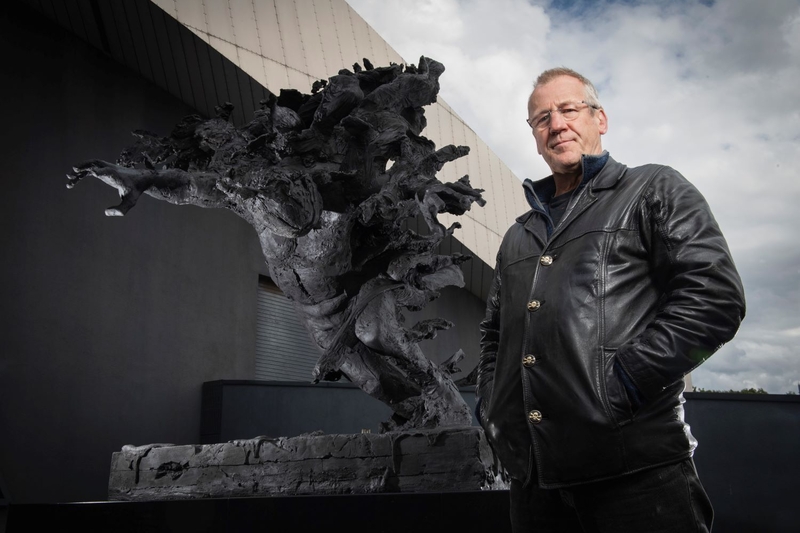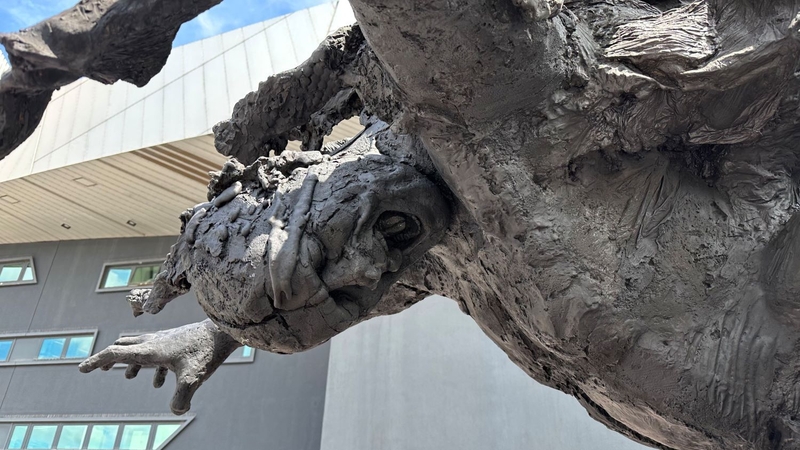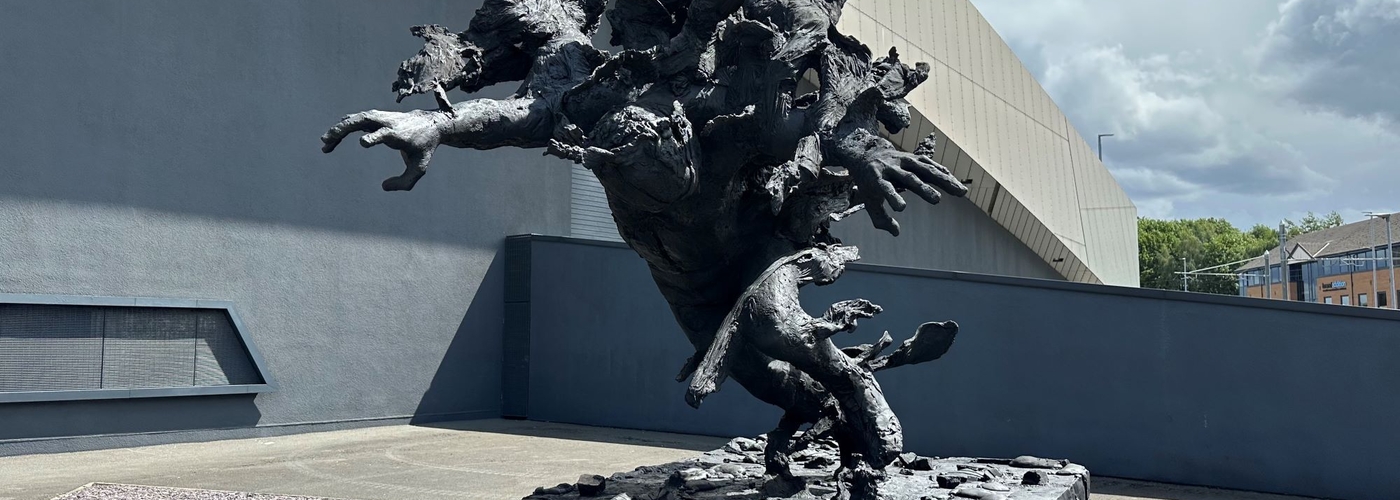Jonathan Schofield doesn't like it at all but thinks it's incredible
What: Man on Fire, a sculpture installed on Friday 7 July, 2023.
Permanent or Temporary: Permanent
Where: Imperial War Museum North (IWMN), outside in the compound, adjacent to and visible from Trafford Wharf Road.
Who: The sculptor is Tim Shaw who was born in Belfast in 1964, went to college at Manchester Polytechnic and Falmouth University and has a studio in Cornwall. The word controversial doesn’t cover the hard and direct rhetoric of his work.
In the early noughties for the Eden Project, one of his sculptures, Silenus, a Greek deity of music, debauchery and drunkenness, was held back for fear of upsetting people. It did. When first on display in London, the sculpture was attacked by a man with an iron bar shouting "You're worshiping the wrong God!”
The sculpture certainly had presence. It was three metres high ‘naked, portly, and proudly erect’. Shaw’s main artistic theme, though, is conflict as this IWMN work, Man on Fire, emphasises.


What IWMN says: Monumental in scale, Man on Fire captures the dreadful moments of a person on fire, caught between life and death. Primarily based on images of the 2005 Basra riots during the Iraq War, it was also inspired by photographs of the 2007 Glasgow airport attack and by Shaw’s own memories of growing up during The Troubles in Northern Ireland.
What Shaw says: Although this work was originally shaped by photographs of a soldier diving for his life from a burning armoured vehicle, Man on Fire bears witness to the universal horror of war. War is time old, and conflict does not discriminate between gender, age or country. Russia’s brutal invasion of Ukraine testifies to the fact that we continually repeat the same tragic mistakes.

What we say: This is one of the most powerful sculptures you might ever see. It is absolutely horrifying. It will remain in your mind’s eye long after you’ve walked away.
The almost five-metre work is a permanent shadow even in sunshine, a dark throb of pain outside IWMN. The material used is oily black-rendered bronze with the appearance of recently melted rubber. In wet weather the sculpture carries the sickly sheen of hot tar. At the rear, embeded in the work is a tyre, which makes you shudder and recall ‘necklacing’ in South Africa.
The main figure is of a man, running, swathed in black fire, flames forced behind as he bends forward in agony, his skin being stripped from his body by the heat. You can't help yourself but bend to look at his face. This excites even more horror. The eyes are bulging, lips peeled back, tongue obscenely exposed, in a desperate wrenching silent scream. You might want to look away immediately.

We live in an age where apparently harmless novels, plays and films are given trigger warnings so our sensitive selves won’t be offended by their content. The same thing happens in galleries. Trigger warnings usually insult our intelligence, so it’s almost surprising within this atmosphere of academic and curatorial anxiety that Man on Fire, given its graphic nature, doesn’t have a trigger warning posted 10 metres away. Heaven forfend IWMN ever posts one.
If comparisons are sought for the work then the obvious one is Francisco Goya’s, The Disasters of War set during the Napoleanic Wars in Spain. Shaw has updated those ghastly images, turned them 3D and scaled them up.
His skill with Man on Fire is to personalise the horrors of war, condense them into the fate of one doomed and terrified soul. These horrors are often made banal through the filter of screen, magazine or newspaper and is often played down in art exhibitions. Man on Fire shows us the heart of what war is; the violence, the pain, the death, the pure visceral hell of it.
The piece does a remarkable thing. This is a work of art that feels real, or as real as we can get without being involved inside a conflict. So much public art is meaningless tat, an afterthought, IWMN should be praised for delivering something with real punch to Greater Manchester.
You might find Man on Fire disgusting, it might horrify you, you might hate it, I think in many ways I feel all these things, yet, I guarantee you, as I did, you will also find it impressive, powerful and moving.
Rating: 10/10 for the sheer power of the work.
Jonathan Schofield is the editor of Manchester Confidential and offers tours and talks across the region. His next walk on Saturday 22 July takes in Alexandra Park and Whalley Range. His books about Manchester are available here.
If you liked this article you will like:
The story of Manchester Architecture part one
The story of Manchester Architecture part two
The story of Manchester Architecture part three
Get the latest news to your inbox
Get the latest food & drink news and exclusive offers by email by signing up to our mailing list. This is one of the ways that Confidentials remains free to our readers and by signing up you help support our high quality, impartial and knowledgable writers. Thank you!
















